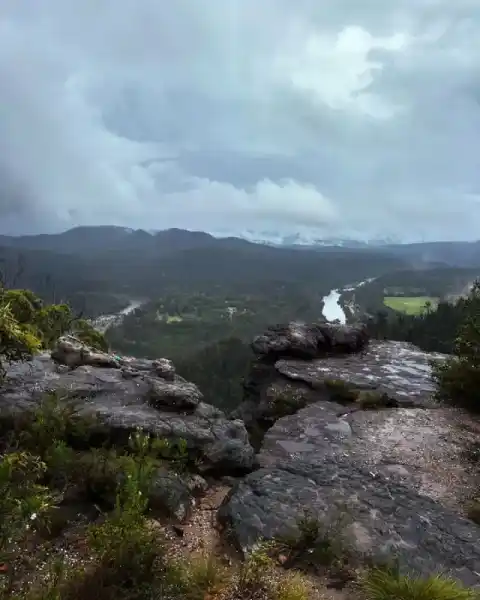Taking the first two letters from founders Henry and Margaret Boegheim’s first names, ‘Hema’ originally distributed and sold maps and marine charts when it opened its doors in 1983.
In 1989 the two founders purchased their first 4WD and immediately crossed the Simpson Desert, traversed the Gunbarrel Highway and took on Cape York.
“It gets in your blood,” says Henry.
Astounded at the poor map quality for Australia’s rugged remote locations, the company swiftly moved into the art of 4WD map-making with maps of Cape York, the Kimberley, the Flinders Ranges and Top End within a matter of years.
This culture of taking the road less travelled swept through the entire business, culminating in the decision to heavily invest in the new technology of GPS to field-check maps in 1996. At the time, the technology was bulky and using it to field-check mapping while driving tracks in real-time was tedious.
“Despite all the possible difficulties, the ability to do our own mapping so accurately was unique. It was like lightning struck,” says Henry.
Maps that were digitally crafted and digitally updated using GPS had superior accuracy and presentation to those drawn by traditional methods, which gave Hema Maps the impetus to undertake the biggest-ever mapping expedition by a private company in Australia: the 1998 Great Desert Tracks expedition.
Current Managing Director Rob Boegheim orchestrated the expedition, which produced highly accurate mapping for an area almost completely devoid of maps suitable for 4WD explorers. To make the Great Desert Tracks series, the field checking was divided between numerous teams known as the Map Patrol, who drove every outback road and track in Australia’s arid centre to gather the data.
The Great Desert Tracks series gave explorers the confidence to discover outback Australia, and in the process assured Hema Maps that digital technology was the future for both producing and using navigation products. The company followed this by digitally field checking and redrawing its entire range of core 4WD maps: the Kimberley, Cape York, the Flinders Ranges, Fraser Island and High Country Victoria.
Digitally created and updated maps gave users more information and more accurate navigation, though it also served as a stepping-stone towards the next innovation for finding the way: the personal GPS navigation system.
In 2007 Hema Maps put its digital database to another use with the Hema Navigator HN1. As the first portable navigation system in Australia to offer both on and off-road navigation, the HN1 pre-packaged all the navigation off-road travellers needed in one device.
A dedicated technical support team was assembled to back the move into digital navigation, which was new territory to a company that previously produced traditional paper maps, atlases and guides.
“Before the Hema Navigator, people never came back unless the paper ripped.” says Rob Boegheim, Hema Maps Managing Director.
Four units have followed the Hema Navigator HN1, each bringing new features to seamlessly connect different elements of four-wheel driving and touring such as camping, caravanning and general trip preparation. This connectivity between content and navigation is exemplified in the market-leading Hema HX-1 Navigator, which combines premium-quality off-road maps with touring points of interest and turn-by-turn navigation to guide explorers anywhere in Australia.
“Our devices now aim to be more and more connected (to online services and the broader needs of travellers), not only to take the complexity out of navigation but to offer explorers the information they want, when they want it.” says Rob.
In today’s technology, smartphones and tablets embody this multi-purposed belief, with Hema Maps’s mobile apps exemplifying the wide range of content and functions expected from digital devices today. Features and usability aside however, Rob notes that what Hema has always done best is what is most important: make reliable and detailed map content.
“First it was a paper map, then a dedicated GPS navigation system and now apps for smartphones and tablets; whatever happens, the unique and accurate content we offer to our customers and the advantages it has are the same today as it was over 30 years ago, albeit in ever-changing forms,” says Rob.
“To frame it another way, over one million dollars has gone into the 300,000km of roads and tracks we have field-checked since 1996, which has all been an investment in ensuring the quality and accuracy of our map content.”
For the company that has built a reputation around exploration, the real adventure is continuing this trend; an unknown path of countless adventures that started in 1983, which for the passionate explorers at Hema Maps is the journey that will never end.
Safe journey...







































